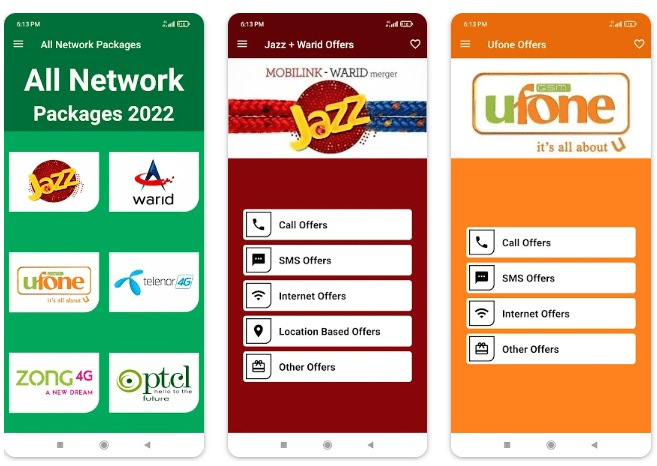Urdu To Arabic Translator
Are you tired of language barriers hindering your communication? Do you want to expand your linguistic skills and connect with people from different cultures? Look no further than Urdu! This beautiful language, originating in India and Pakistan, is spoken by millions across the globe. And what’s more, learning Urdu can open up a whole new world of opportunities – including the ability to translate into Arabic! In this post, we’ll explore the history and dialects of Urdu, as well as its benefits and how to learn it. So let’s dive in and discover the wonders of Urdu-to-Arabic translation together!
What is Urdu?
Urdu is a fascinating language with a rich cultural history. It originated in northern India and has roots in both Hindi and Persian. The language is written in the Perso-Arabic script, which gives it a unique visual appeal.
One of the defining features of Urdu is its use of poetic expressions, making it particularly popular among poets and writers. In fact, Urdu poetry has had a significant impact on Indian literature as a whole.
Today, Urdu is one of the official languages of Pakistan and also spoken widely across India, Bangladesh, Nepal, Afghanistan, Saudi Arabia and Iran. With over 100 million speakers worldwide and growing popularity globally due to its beauty and versatility as an artistic medium.
While some may perceive learning Urdu as challenging because it uses Persian script rather than Roman letters or other alphabets more familiar to English-speakers; by taking small steps every day with dedicated practice anyone can learn this beautiful language!
The History of Urdu
Urdu is a language that has a rich and fascinating history. Its roots can be traced back to the 13th century when it began as a collection of dialects spoken by Muslim soldiers in India. Over time, these dialects merged and evolved into what we now know as Urdu.
During the Mughal Empire (1526-1857), Urdu became the official language of the court, administration, and education. It was also during this time that Urdu began to flourish as a literary language with poets such as Mirza Ghalib and Allama Iqbal gaining international recognition for their contributions to Urdu literature.
In addition to its royal patronage, Urdu owes much of its development to interactions between different cultures and languages. Its vocabulary includes words from Persian, Arabic, Turkish, Sanskrit, Hindi and Punjabi among others.
Despite facing challenges throughout history like British colonization which favored English over all other Indian languages including Urdu leading towards decline in use of the language amongst educated elite class but it still remains one of South Asia’s most widely spoken languages today.
The Different dialects of Urdu
Urdu is a language that has different dialects varying from region to region. Some of the major dialects of Urdu include Dakhini, Rekhta, and Modern Standard Urdu.
Dakhini is mostly spoken in the Deccan Plateau area of India. It has a distinct accent and vocabulary that sets it apart from other Urdu dialects. The language also incorporates elements of Marathi, Telugu, and Kannada into its grammar.
Rekhta is an archaic form of Urdu that was popularized during the Mughal Empire era in India. It combines Persian and Arabic words with Hindustani grammar to create a unique poetic language often used in ghazals (a type of poetry).
Modern Standard Urdu or simply called “Urdu” by most people today, is the official language of Pakistan and one of India’s official languages as well. This version uses modern vocabulary with fewer Persian or Arabic words than earlier versions.
Each dialect offers its own cultural richness through literature, music, and oral traditions passed down throughout generations. Learning about these distinct variations can help you better understand their differences while appreciating their similarities at the same time.
Why learn Urdu?
Urdu is a beautiful language spoken by over 100 million people worldwide. While it may not be as widely spoken as other languages like English or Spanish, there are still many compelling reasons why you should consider learning Urdu.
First and foremost, if you have any interest in the rich culture and history of South Asia, then learning Urdu can provide invaluable insights into this fascinating world. Urdu has been an important part of Indian and Pakistani literature for centuries, with countless works of poetry, prose and drama written in this language.
Moreover, if you plan on traveling to Pakistan or India for business or leisure purposes, knowing how to speak Urdu will certainly come in handy. It will allow you to communicate more effectively with the locals and better understand their customs.
Additionally, learning Urdu can be an excellent way to challenge yourself mentally while also improving your cognitive abilities. Studies have shown that bilingual individuals tend to have sharper minds than those who only speak one language.
Even if you don’t have any particular interest in South Asian culture or don’t plan on visiting Pakistan anytime soon, simply knowing how to speak another language is always a valuable skill that can open doors both personally and professionally.
How to learn Urdu
Learning a new language can be daunting, but with the right approach and resources, it’s definitely achievable. If you’re looking to learn Urdu, here are some tips that might help:
1. Immerse yourself in the language: Surround yourself with Urdu as much as possible – listen to Urdu music, watch Pakistani dramas or movies, read books and newspapers in Urdu.
2. Take a course: Enrolling in an online or offline course is a great way to get started on your Urdu journey. You’ll have access to structured lessons and guidance from an experienced teacher.
3. Practice speaking: It’s important to practice speaking the language regularly so that you become comfortable with its pronunciation and grammar rules.
4. Use apps and websites: There are many resources available online such as Duolingo or Babbel which can help reinforce your learning experience through interactive games or activities.
5. Find a conversation partner: Speaking with someone who knows the language fluently is one of the best ways to improve your skills quickly.
Remember that everyone learns at their own pace so don’t be discouraged if progress seems slow at first!
The benefits of learning Urdu
Learning Urdu has numerous benefits that go beyond just being able to communicate with Urdu speakers. Here are some of the key advantages:
Firstly, learning Urdu can greatly enhance your cultural understanding and appreciation for South Asian literature, music, film and art. By learning the language, you will be able to fully immerse yourself in these aspects of Pakistani and Indian culture.
Secondly, knowing Urdu can also provide great professional opportunities. With Pakistan having a population of over 220 million people and India having a population of over 1.3 billion people – both countries where Urdu is widely spoken – being fluent in this language opens doors for career growth.
Thirdly, as Arabic script is used to write Urdu, it becomes easier for an individual who knows both languages to learn Quranic Arabic which they can use while performing their religious rituals.
By mastering another language such as Urdu you will improve your cognitive abilities including memory retention skills and effective communication strategies making it easier for you to adapt across different cultures.
There are countless benefits to learning the beautiful language of Urdu – from enriching one’s cultural experience all the way through gaining business advantage – so why not start today?
Conclusion
Urdu is a beautiful and poetic language with a rich history and cultural significance. Learning Urdu can open up new doors of communication and opportunities for personal growth, whether it be for business or personal relationships. With the rise of globalization and interconnectedness in today’s world, being able to speak multiple languages has become more important than ever before.
If you’re interested in learning Urdu, there are many resources available online that can help you get started. From textbooks to language exchange programs, there’s something out there for every type of learner. And if you’re looking to translate your Urdu documents into Arabic or any other language, an online translation service like TranslationPal provides fast and accurate results.
So why not take the first step towards expanding your linguistic horizons by learning Urdu? Whether it be through self-study or enrolling in a formal course at a university or community center near you – the benefits are endless! Start exploring this unique language today!



